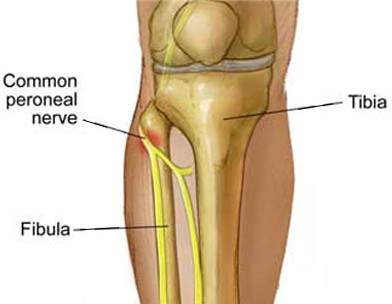 Peroneal Nerve Floss
Peroneal Nerve Floss
The peroneal nerve or fibular nerve is one of the two nerves that make up the sciatic nerve. The peroneal nerve splits off from the tibial nerve behind the knee. Peroneal nerve dsfunction is damage to the peroneal nerve leading to loss of movement or sensation in the foot and leg. One of the best ways to alleviate that dysfunction is by performing a peroneal nerve floss.
Peroneal nerve dysfunction is a type of peripheral neuropathy (damage to nerves outside the brain or spinal cord). This condition can affect people of any age. Typically around 17% of people have the entire sciatic nerve pierce the piriformis muscle, which is the most common site of entrapement of the sciatic nerve. The remaining population have just the peroneal nerve portion of the sciatic nerve pierce the piriformis muscle leading to a peroneal nerve entrapment.
Common peroneal nerve injuries are more common in people:
- Who are very thin
- Who have conditions such as diabetic neuropathy or polyarteritis nodosa
- Who are had a surgical alteration of the low back and/or hip
Symptoms
- Decreased sensation, numbness, or tingling in the top of the foot or the outer part of the upper or lower leg
- Foot that drops (unable to hold the foot straight across)
- “Slapping” gait (walking pattern in which each step makes a slapping noise)
- Toes drag while walking
- Walking problems
- Weakness of the ankles or feet
If you are experiencing this type of pain please watch the video below to see Dr. Shepard perform recommended ways of performing a peroneal nerve floss.
You may also want to watch Dr. Shepard’s video on flossing the entire sciatic nerve to help decrease the tension on the nerve and relax the piriformis muscle as well. Sciatic nerve floss here –> https://bnchiro.com/sciatic-nerve-floss/
To learn more about the piriformis sydrome and how performing a peroneal nerve floss, sciatic nerve floss, and piriformis stretching can reduce the effects of an overused piriformis muscle please visit this link to a previous blog post written by Dr. Shepard
Click Here –> Piriformis Muscle – The Root Cause of Your Low Back Pain and Hip Pain
If you have any questions, feel free to email me at drshepard@bnchiro.com
